-
More than 500 million people could face increasing water scarcity
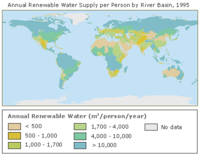
Both freshwater availability for many millions of people and the stability of ecosystems such as the Siberian tundra or Indian grasslands are put at risk by climate change. Even if global warming is limited to 2 degrees above pre-industrial levels, 500 million people could be subject to increased water scarcity.
-
-
Reducing urban water leakage
No resource is more fundamental to life and human society than water. Yet, globally, 25 to 30 percent of drinking water is lost every year due to leakages in urban water distribution systems. An EU-funded project is proposing an innovative solution for the automatic detection, sealing, and curing of typical network pipes, without digging up pavements and roads.
-
-
Bolstering water security in a crowded world
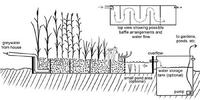
With limited water and the increasing number of people depending on it – there will be more than nine billion people on the planet by 2050 — water security is tenuous. Integrated water management plans using “blue,” “green,” and “gray” water, however, can increase water security by allowing agriculture to rise to the challenge of feeding a growing world population while leaving enough water for other uses.
-
-
Making clean drinking water universally available “achievable”
More than 780 million people around the world still do not have safe and reliable drinking water. The problem of providing clean water is most acute in developing countries, particularly in Africa, where creaking infrastructures struggle to keep pace with fast-growing urban populations; in rural areas, millions of water pumps stand unused waiting to be repaired.
-
-
“In 30 years Iran will be a ghost town” if the country’s water situation does not improve
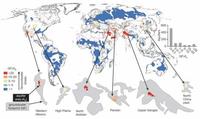
Issa Kalantari, a former agriculture minister during the presidency of Ayatollah Hashemi Rafsanjani and currently and advisor to President Hassan Rouhani’s cabinet, says Iran’s water crisis was especially grave. “Our main problem that threatens us, that is more dangerous than Israel, America or political fighting, is the issue of living in Iran. It is that the Iranian plateau is becoming uninhabitable”; “If this situation is not reformed, in 30 years Iran will be a ghost town.”
-
-
Missed opportunities to save water, energy
Water and wastewater managers are missing substantial opportunities to save energy and money, according to a new report.The report also identifies significant gaps in knowledge about the amount of water used to extract energy resources such as natural gas, oil, and coal, and to generate electricity.
-
-
Demonstrating bioenergy technology
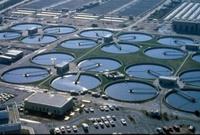
Researchers plan to demonstrate an innovative bioenergy technology that converts wastewater treatment plant byproducts into hydrogen gas to produce electricity. The demonstration project will start in mid-October, and in about a year the wastewater treatment plant will be processing one ton per day of wet biosolids and will be producing up to thirty kilowatts of electricity. The electricity, in turn, will be used to power select functions at the plant.
-
-
Today’s worst watershed stresses in U.S. may become tomorrow’s new normal
Nearly one in ten U.S. watersheds is “stressed,” with demand for water exceeding natural supply, according to a new analysis of surface water in the United States. What is more, the lowest water flow seasons of recent years — times of great stress on rivers, streams, and sectors that use their waters — are likely to become typical as climates continue to warm.
-
-
U.S. makes progress toward a National Water Census
Growing populations, increased energy development, and the uncertain effects of a changing climate magnify the need for an improved understanding of water use and water availability. No comprehensive and current national assessment of water resources exists, however. A USGS report released in April, Progress Toward Establishing a National Assessment of Water Availability and Use, fulfilled a requirement under the 2009 SECURE Water Act for the Secretary of the Interior to report to Congress on progress made in implementing the national water availability and use assessment program, also referred to as a National Water Census.
-
-
Sewage treatment removes widely used home and garden insecticides from wastewater
Even though sewage treatment plants are not designed to remove tiny amounts of pesticides, they do an excellent job of dealing with the most widely used family of home and garden insecticides, scientists reported. The use of pyrethrins, derived from chrysanthemum flowers, and the related synthetic pyrethroids, has been on the increase during the last decade. Researchers found that advanced sewage treatment reduced the levels of pyrethroids by more than 97 percent.
-
-
Using desalination to secure water in the desert
Researchers are working on an innovative project to secure water supplies in desert communities which suffer from having an acute shortage of fresh water, but abundant hypersaline groundwater. Hypersaline water is even saltier than seawater.
-
-
Old concrete helps keep water clean
Lakes and streams are often receiving so much phosphorous that it could pose a threat to the local aquatic environment. Now, researchers show that there is an easy and inexpensive way to prevent phosphorus from being discharged to aquatic environments. The solution is crushed concrete from demolition sites.
-
-
Bacteria in drinking water are essential to keeping it clean
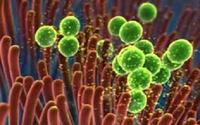
Researchers point the way to more sophisticated and targeted methods of ensuring our drinking water remains safe to drink, while still reducing the need for chemical treatments and identifying potential hazards more quickly.
-
-
Groundwater in Vietnam threatened by a new source of arsenic
In Southern Asia, an estimated 100 million people have been exposed to risks from groundwater contaminated with naturally occurring arsenic. The tainted water, used for drinking, agriculture, and industry, has resulted in a variety of serious health risks, including cancer. “Dig deep” to avoid naturally occurring arsenic contamination has been promoted as an answer to obtaining safe water in South Asia, but arsenic has been found in numerous deep wells drilled in the Mekong Delta region of southern Vietnam.
-
-
Global warming threatens South American water supply: study
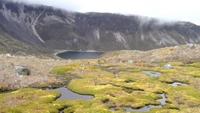
Chile and Argentina may face critical water storage issues due to rain-bearing westerly winds over South America’s Patagonian Ice-Field to moving south as a result of global warming.
-
- All
- Regional
- Water
- Biometrics
- Borders/Immig
- Business
- Cybersecurity
- Detection
- Disasters
- Government
- Infrastructure
- International
- Public health
- Public Safety
- Communication interoperabillity
- Emergency services
- Emergency medical services
- Fire
- First response
- IEDs
- Law Enforcement
- Law Enforcement Technology
- Military technology
- Nonlethal weapons
- Nuclear weapons
- Personal protection equipment
- Police
- Notification /alert systems
- Situational awareness
- Weapons systems
- Sci-Tech
- Sector Reports
- Surveillance
- Transportation
Advertising & Marketing: advertise@newswirepubs.com
Editorial: editor@newswirepubs.com
General: info@newswirepubs.com
2010-2011 © News Wire Publications, LLC News Wire Publications, LLC
220 Old Country Road | Suite 200 | Mineola | New York | 11501
Permissions and Policies
Editorial: editor@newswirepubs.com
General: info@newswirepubs.com
2010-2011 © News Wire Publications, LLC News Wire Publications, LLC
220 Old Country Road | Suite 200 | Mineola | New York | 11501
Permissions and Policies
